If you love adding a bit of spice to your dishes, you’re in for a treat. This guide will walk you through the process of how to ferment peppers at home. We’ll answer questions like how do you make fermented peppers? What’s the proper salt ratio for fermenting peppers? What peppers can be fermented? And how long do you ferment peppers?
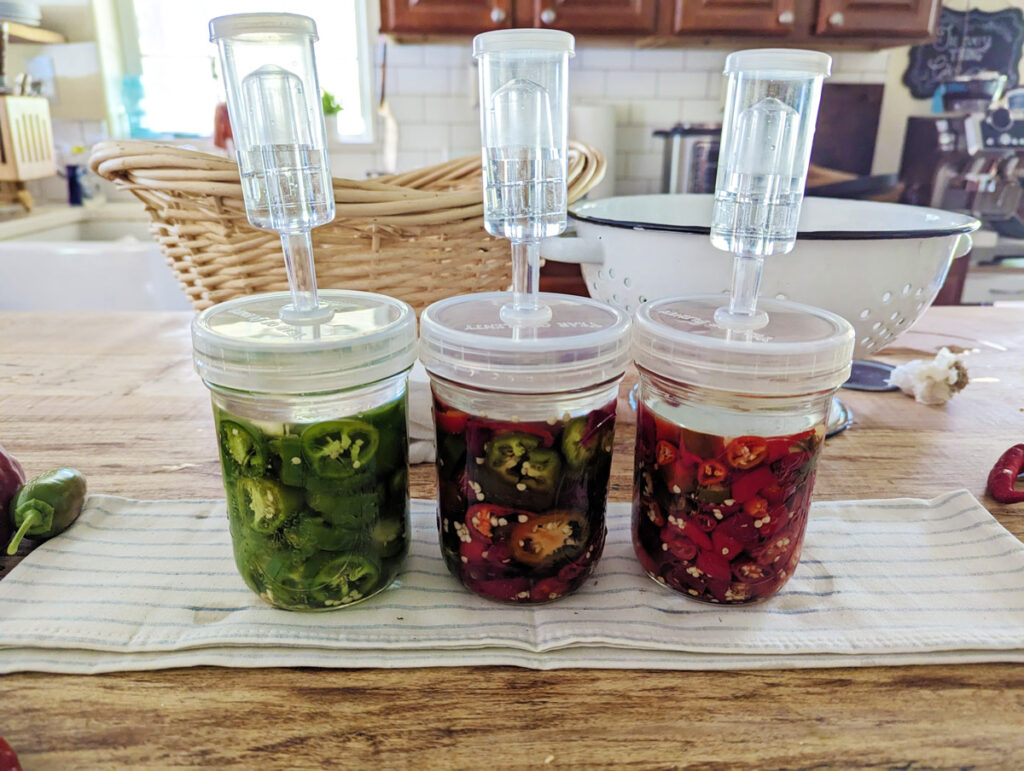
Table of Contents[Hide][Show]
- Why I Love Fermented Peppers
- Benefits of Fermenting Peppers
- How Long do Fermented Peppers Take?
- How to Store Fermented Peppers
- Ways to Use Fermented Peppers
-
Conclusion+−
- What are fermented peppers?
- How long does it take to ferment peppers?
- What types of peppers can I use for fermentation?
- How do I know if my fermented peppers have gone bad?
- How do I store my fermented peppers?
- Can I use fermented peppers in hot sauce?
- What are the health benefits of fermented peppers?
- More Posts You May Enjoy
- Fermented Peppers
Why I Love Fermented Peppers
When the peppers are coming on strong from the garden, I love having multiple ways to preserve them. We don’t just like eating fresh veggies in the summer, we like to enjoy the garden bounty throughout the year, and fermenting is by far the easiest and fastest preservation method!
Fermented peppers have been a mainstay at our house because they make the best condiment for taco night (and any other dish that needs a kick of heat). They’re great on burgers, sandwiches, burritos, chopped up and topped over eggs, fish, chicken or pulled pork. You name it!
Not only that, but once you have a jar or two of fermented peppers, you can turn them into the most delicious fermented hot sauce recipe. Trust me when I tell you, my hot-sauce-loving husband (ahem, Tabasco) said the finished hot sauce was the best hot sauce he’s ever tasted!
My go-to fermented peppers are jalapenos because my family likes heat, but not too much. The best thing about this recipe is you can choose which peppers your family likes best. I’ve even been known to add some jalapenos to my homemade sauerkraut if that tells you how much we love the heat!
You may also enjoy these fermented condiments:
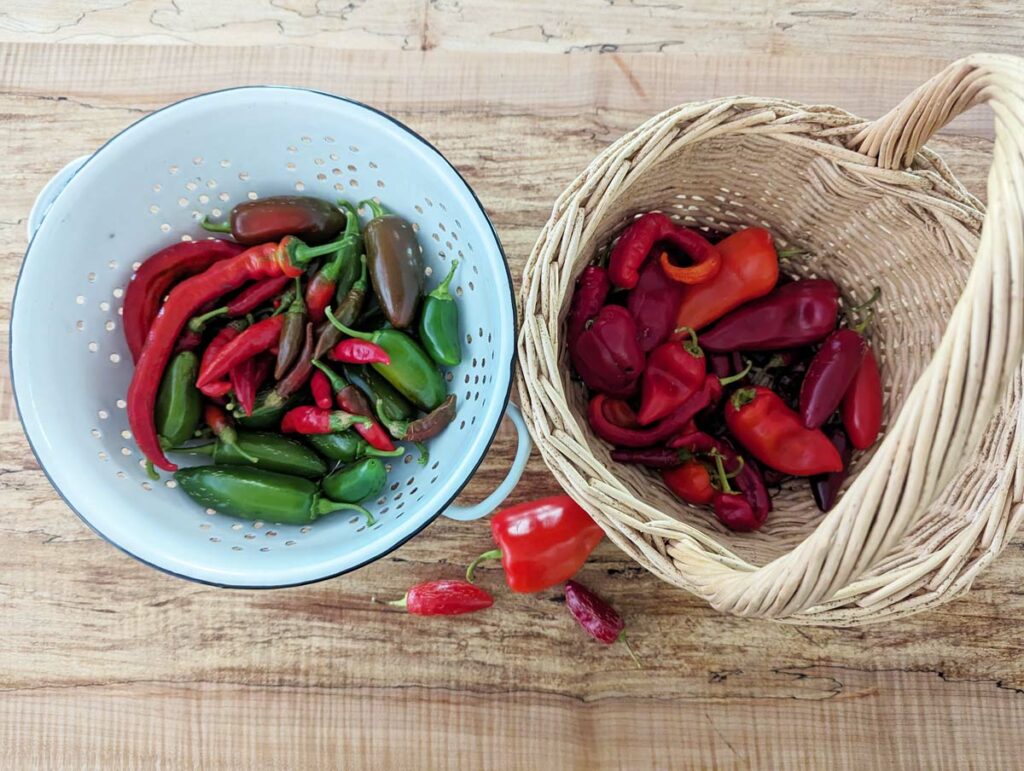
Benefits of Fermenting Peppers
You may be wondering why you should ferment peppers as opposed to freezing or even pickling them. While I love to preserve my peppers multiple ways, whenever something can be fermented, that’s generally my go-to.
Not only do fermented foods have a longer shelf-life than non-fermented fresh produce, they’re also healthier. (Source) Plus, learning how to make fermented hot sauce is the best benefit of all!
My ultimate guide to fermenting vegetables goes into more detail about the health benefits of fermentation. To summarize, the fermentation process multiplies beneficial bacteria. (Source) These bacteria synthesize vitamins and minerals and produce biologically active peptides with enzymes that can help improve digestion. These peptides also produce conjugated linoleic acids (CLAs) which can help lower blood pressure. CLAs are also anti-microbial, anti-carcinogenic, anti-oxidant and anti-allergenic. (Source)
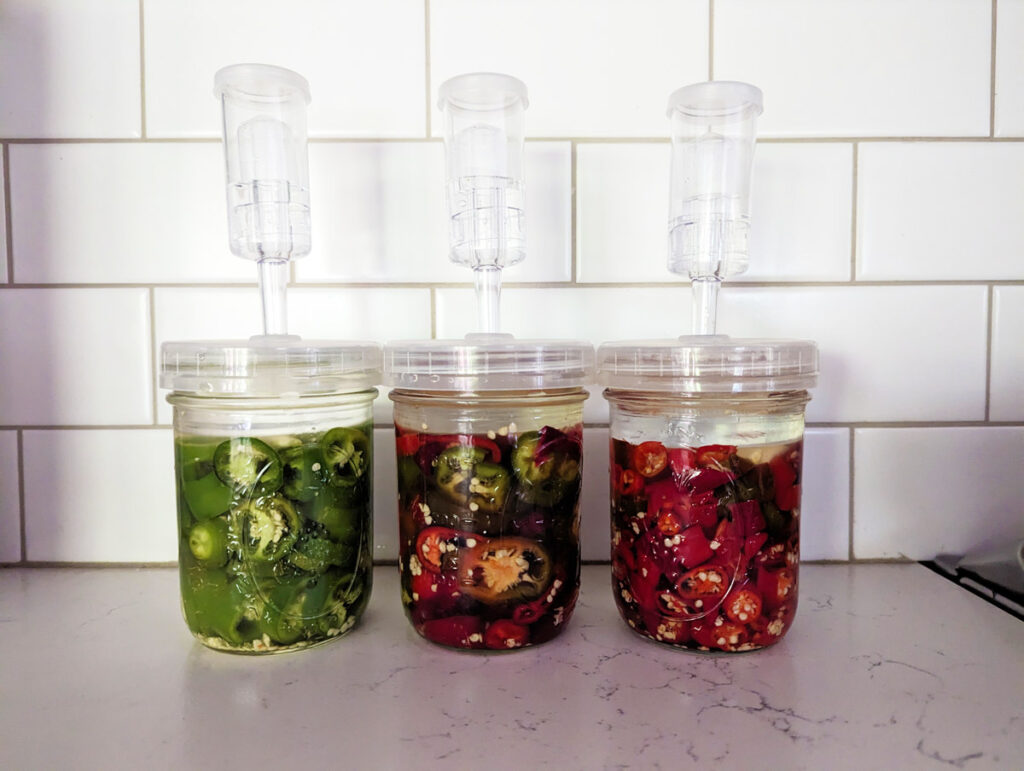
How to Ferment Peppers
Now that we’ve covered the benefits of fermented peppers and why you should make your own, let’s dive into the process of how to make them.
Supplies Needed
- Wide-Mouth Mason Jar – I prefer using a wide-mouth glass jar because it’s easier to get the ferment out once it’s done. However, if you don’t have fermentation weights, using a regular mouth Mason jar can help keep the ferment below the brine. You can also use a fermentation crock for this recipe, if you have one.
- Fermentation Weights – Fermenting weights help to keep the food under the brine. To avoid mold, you want to be sure that all pieces of your ferment stay below the brine level.
- Fermentation Lids – I like to use an airlock Mason jar lid system because I find they help against the formation of kahm yeast (learn more about kahm yeast and if it’s harmful here). You can also use a metal canning lid and band or silicone fermenting lids. If you use a metal canning lid, you will need to “burp” your jars to keep the pressure from building up too much.

Ingredients Needed
- Peppers – You can use any kind of chili pepper you like. I prefer jalapeno peppers, but you can use serranos, habaneros, fresno, cayenne, thai or even a combination of peppers. Do keep in mind that peppers above 500,000 Scoville units won’t ferment because capsaicin is bactericidal. Also, make sure your peppers are fresh and free of any mold or soft spots. Pro Tip: If you want milder peppers, remove the seeds and inner ribs before fermenting, and choose less ripe peppers as they get hotter the more ripe they are. You could also try using sweet peppers, though I can’t attest to the taste because we always go for the spicy option.
- Garlic – I like to add some fresh garlic cloves to my fermented peppers. Mostly because I love fermented garlic, but also because I know I’ll be turning some of these fermented peppers into fermented hot sauce, and I love the added flavor the garlic brings to that recipe.
- Brine – You’ll need to make a salt-water brine solution. The amount of salt and water you’ll use will depend on how much brine you need (and how many jars of fermented peppers you’re making). To make the brine, mix four tablespoons of sea salt for every quart of filtered water to make a 5% brine. Stir until the salt is fully dissolved. I always use Redmond Real Salt when doing any kind of cooking or fermenting. Use coupon code “Pioneering” to get 15% off your order at checkout.
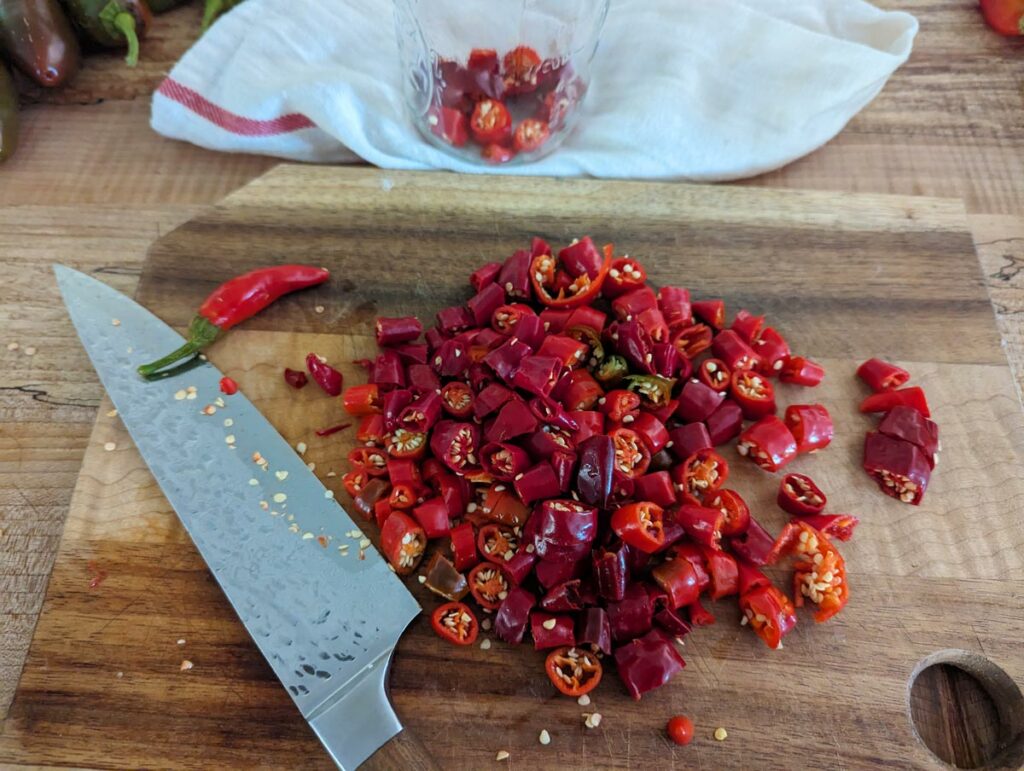
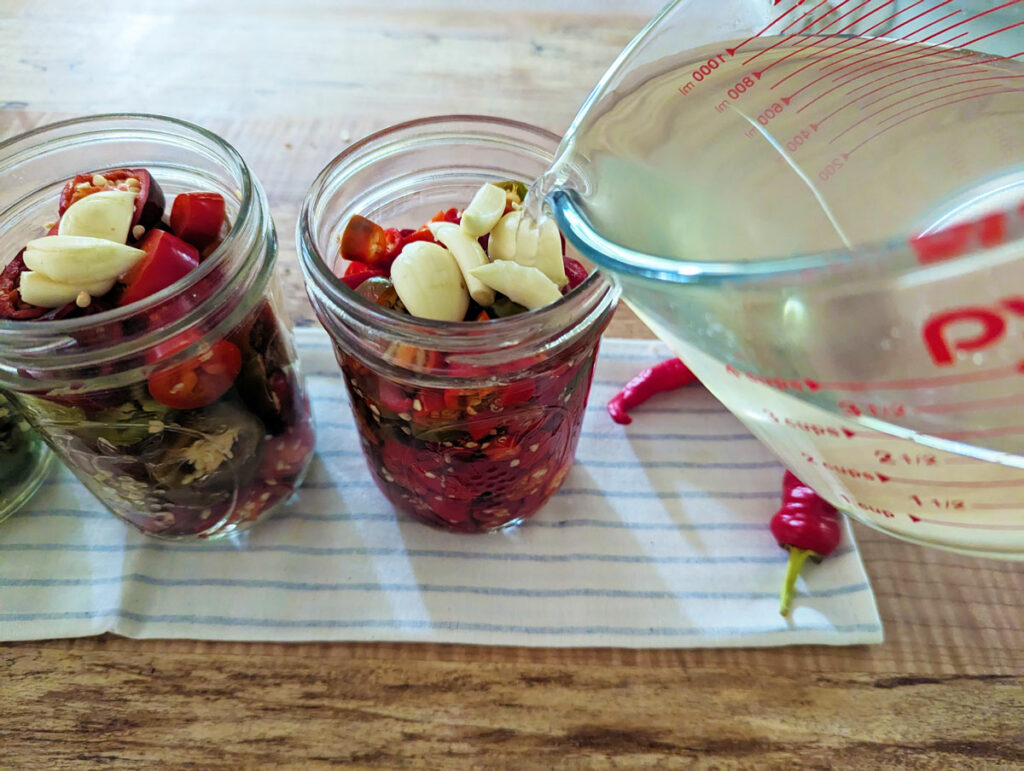
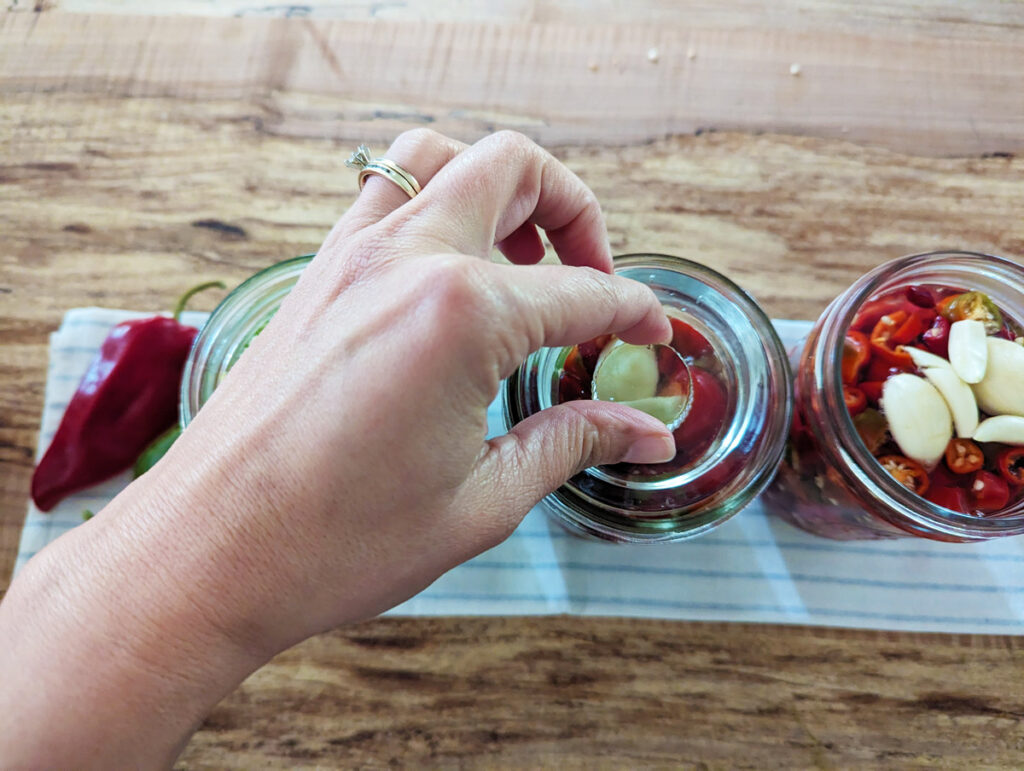
Step-by-Step Directions
- It’s important to always start ferments with clean and sanitized vessels. You don’t need to sterilize them. Just a good wash with hot, soapy water and a thorough rinsing will do.
- Make your salt brine and set aside (see proper ratios above).
- Wash and slice or dice peppers into small pieces. The size is preferential as you know best how you’ll use the fermented peppers. I like to slice them to use for topping burgers, sandwiches and tacos. Pro Tip: Keep in mind that the smaller the pieces, the faster the fermentation process.
- Place peppers (and optional garlic) into your jars. Be sure to leave some room at the top of the jar for the fermentation weight as well as expansion during the fermentation process.
- Pour brine to cover the peppers (and garlic) and place a fermenting weight on top. Make sure all ingredients are submerged under the brine.
- Add a fermentation lid (or a regular two-piece Mason jar lid) and leave it on the counter at room temperature to ferment for one to five weeks (more on this below). Pro Tip: If using a Mason jar lid, be sure to “burp” the jar regularly to release the gas buildup and prevent the jar from exploding. You should be able to tell when it’s time to burp if the dome of the lid is pressed out. To burp your jar, simply open the jar and let the gas escape, then close the jar back up and return it to its fermentation spot.
Once the peppers have finished fermenting, you can enjoy them as they are or use them in various recipes. Store them in the refrigerator, and they should last for several months.

How Long do Fermented Peppers Take?
The total time for the fermentation process will depend on the temperature of your environment and your taste preference. Generally, it takes about 1-2 weeks for the lactic acid to build and the lactobacillus (good bacteria) to take over and ferment the peppers. However, you can allow them to ferment much longer if you’d prefer.
I recommend you taste your peppers after one week of fermenting, then sample them each week until you find what works best for your environment and taste preference.
How to Store Fermented Peppers
Once your peppers are fermented to your liking, you may transfer them to cold storage or the refrigerator. Fermented foods tend not to go “bad;” they just go “different.” This means the longer your peppers are in the refrigerator, the softer they will become. The flavors may also mellow after a few months, so I recommend using them up within 3-6 months.
This isn’t to say I haven’t had a jar of fermented peppers last in the refrigerator for an entire year before! Just always be sure to dip into the jar with a clean utensil for each serving and they’ll last a plenty long time.
Learn the 5 Proven Steps to Safe & Stress-Free Home Canning
This free on-demand workshop walks you through the same method I use to safely can 400+ jars a year. You’ll learn:
- When to use a water bath vs. pressure canner (get this wrong, and it’s risky)
- How to avoid spoilage with smart safety-first practices
- Exactly how to build your long-term pantry—without burnout
✅ Perfect for preserving fruits, veggies, meat, and more—even if you’ve never canned a thing.
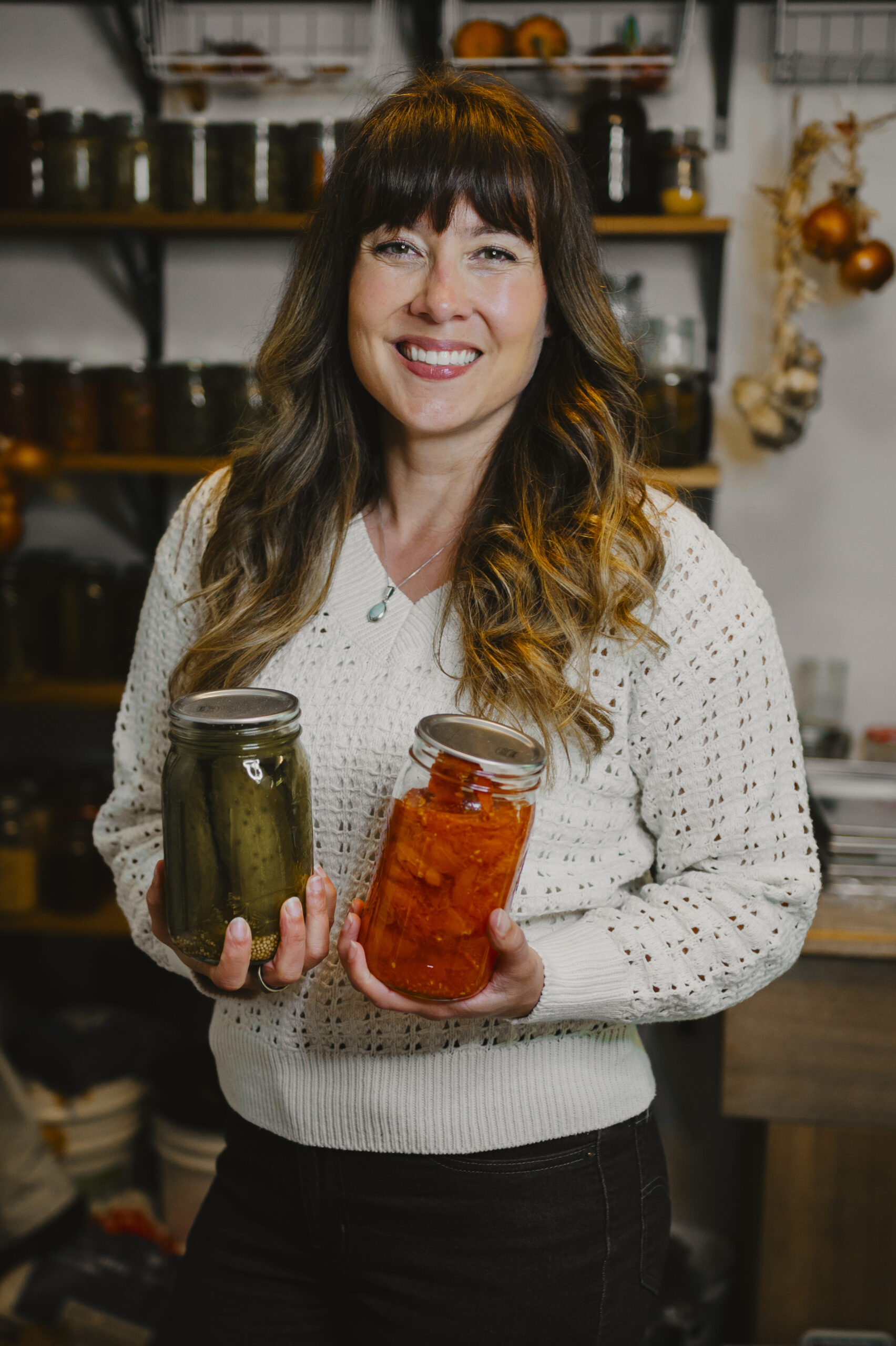

Ways to Use Fermented Peppers
Now that you have your delicious homemade fermented peppers, it’s time to use them to elevate your home-cooking. Fermented peppers have a unique flavor profile that adds depth and complexity to any dish.
Here are some ideas to get you started:
- Fermented Hot Sauce – One of the most popular uses for fermented peppers is to make your own hot sauce. To make a fermented hot sauce with your homemade peppers, you’ll need a food processor. Simply blend your fermented peppers with some vinegar and salt until you achieve your desired consistency. You can also add other ingredients such as garlic, onion, and honey for a more complex flavor.
- Add to Salsas, Soups, and Stews – Fermented peppers can be chopped and added to salsas, soups, and stews for an extra burst of flavor. The fermentation process enhances the natural sweetness of the peppers while balancing out their heat. Try adding some fermented jalapenos to your guacamole or some fermented habaneros to your chili for a mouthwatering kick.
- Creating a Hot Pepper Paste -If you want to create a smooth and flavorful paste with your fermented peppers, simply process them in a food processor until they reach your desired consistency. This paste can be used as a marinade, a condiment, or a base for sauces and dressings. Add a dollop to your scrambled eggs or mix it with some mayo for a delicious sandwich spread.
- Add to Burgers & Sandwiches– Pop those babies right on to your hamburgers or sandwiches!
As you can see, the possibilities for using fermented peppers in your cooking are endless. Don’t be afraid to get creative and experiment with different recipes and flavor combinations. Your taste buds will thank you!
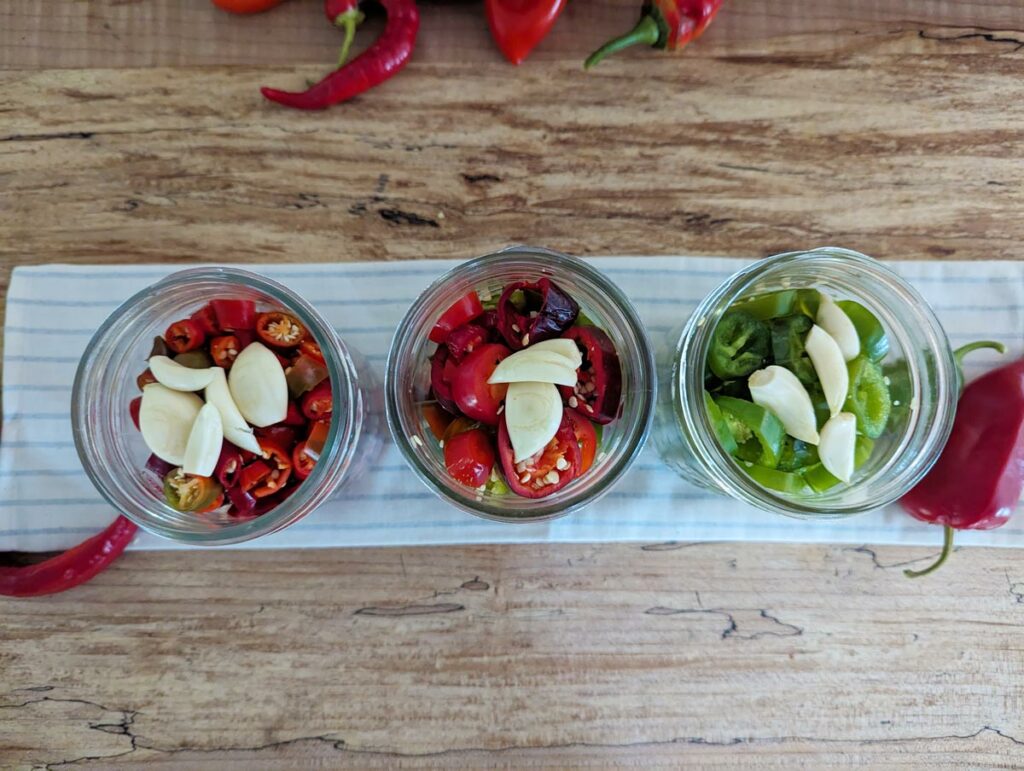
Conclusion
And that’s it! You now have all the knowledge necessary to create flavorful fermented peppers in your own kitchen. Remember, the key to successful fermentation is patience and attention to detail. But once you’ve mastered the art of fermenting peppers, the possibilities are endless.
Not only do fermented peppers add a unique flavor to your dishes, but they also contain gut-healthy probiotics that can improve your overall health and well-being.
Frequently Asked Questions
What are fermented peppers?
Fermented peppers are peppers that have undergone the process of lacto-fermentation, where they are submerged in a salt brine and left to ferment for a period of time. This process enhances the flavor of the peppers and also creates beneficial bacteria that aid in digestion.
How long does it take to ferment peppers?
The fermentation process for peppers typically takes around 1 to 2 weeks, depending on the desired level of fermentation. It is important to taste the peppers regularly to ensure they have reached your preferred level of tanginess.
What types of peppers can I use for fermentation?
You can use a variety of peppers for fermentation, including jalapenos, serranos, habaneros, and bell peppers. Experiment with different combinations to create unique flavor profiles.
How do I know if my fermented peppers have gone bad?
If your fermented peppers develop an off-smell, unusual color, or mold, it is an indication that they have gone bad. It’s important to discard them in such cases to avoid any potential health risks.
How do I store my fermented peppers?
Once the fermentation process is complete, you can transfer your fermented peppers to clean, airtight containers and store them in the refrigerator. This will help preserve their flavor and extend their shelf life.
Can I use fermented peppers in hot sauce?
Absolutely! Fermented peppers make a fantastic base for homemade hot sauce. Simply blend the fermented peppers with vinegar, garlic, and other desired spices to create a flavorful and tangy hot sauce.
What are the health benefits of fermented peppers?
Fermented peppers are rich in probiotics, which promote a healthy gut microbiome. They also contain higher levels of vitamins and minerals compared to fresh peppers, making them a nutritious addition to your diet.
Subscribe to Melissa K. Norris!
Get updates on the latest posts and more from Melissa K. Norris straight to your inbox.
We use your personal data for interest-based advertising, as outlined in our Privacy Notice.
More Posts You May Enjoy
- Fermentation for Health Benefits & Food Preservation
- Fermented Dairy – Why You Should Be Doing This Now
- How to Make Yogurt at Home
- How to Make a Sourdough Starter + Tips for Success
- Best Beginner Sourdough Sandwich Bread No Yeast
- Sourdough Chocolate Bread From Scratch
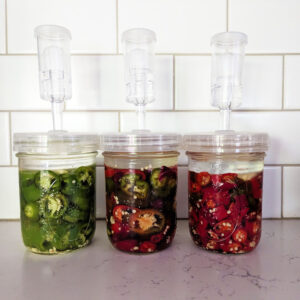
Fermented Peppers
Equipment
- Mason jar
- Fermenting lid
- Fermenting weight
Ingredients
- 12 whole peppers
- 4 cloves garlic optional
- 5% salt water brine
Instructions
- It’s important to always start ferments with clean and sanitized vessels. You don’t need to sterilize them. Just a good wash with hot, soapy water and a thorough rinsing will do.
- Make your salt brine and set aside (see proper ratios above or the note section).
- Wash and slice peppers into small pieces. The size is preferential as you know best how you’ll use the fermented peppers. I like to slice them to use for topping burgers, sandwiches and tacos. Pro Tip: Keep in mind that the smaller the pieces, the faster the fermentation process.
- Place peppers (and optional garlic) into your jars. Be sure to leave some room at the top of the jar for the fermentation weight as well as expansion during the fermentation process.
- Pour brine to cover the peppers (and garlic) and place a fermenting weight on top. Make sure all ingredients are submerged under the brine.
- Add a fermentation lid (or a regular two-piece Mason jar lid) and leave it on the counter at room temperature to ferment for one to two weeks.
Notes
- Pro Tip: If using a Mason jar lid, be sure to “burp” the jar regularly to release the gas buildup and prevent the jar from exploding. You should be able to tell when it’s time to burp if the dome of the lid is pressed out. To burp your jar, simply open the jar and let the gas escape, then close the jar back up and return it to its fermentation spot.
- The longer you let the peppers ferment the more mild the flavor.
- Once peppers are to your liking, transfer them to cold storage or keep in the refrigerator.
- Always use a clean utensil when dipping into the jar.
- 5% salt water brine – mix four tablespoons of salt for every quart (four cups) of water



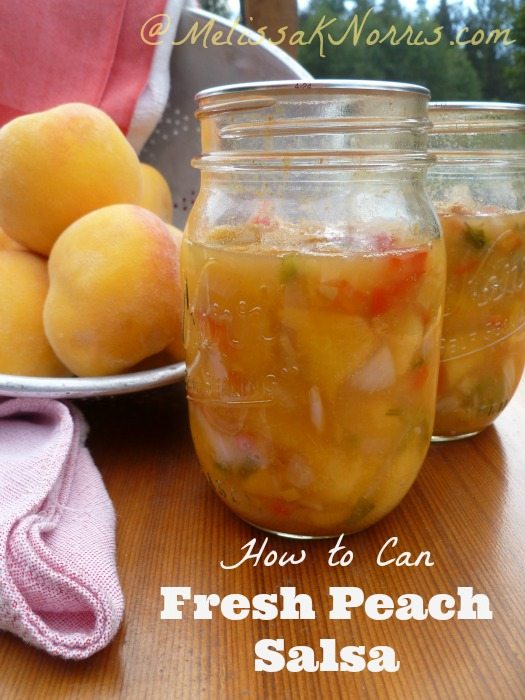
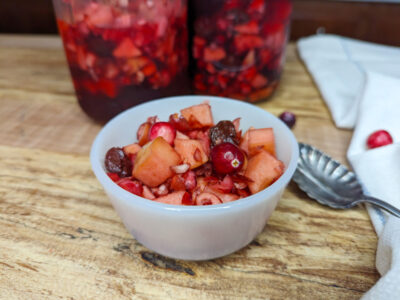





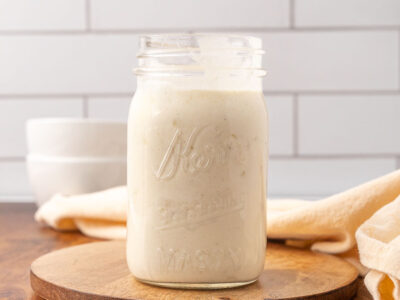
How long will the fermented peppers keep for. And can this be done with jalapeños?
I will now grow peppers in the garden every year just so I can ferment them! Thanks for this recipe!
Can I ferment whole Panamanian and habenero peppers?
You need to look up their skoville rating as stated in the article. If they’re too hot they may not ferment well.
Hi Melissa and everyone,
Texas A&M has produced a jalapeno pepper called TAM. It has less heat an a very good taste. Seeds can be purchased on the internet. I am interested in the fermented pepper sauce and will try your recipe soon. Tks, Lindy
Hi, can fermented peppers be water bath canned?
Question: Can I use frozen peppers for fermenting? Here, it’s spring, so it will be a few months till I have fresh peppers, but I found a couple of big bags of cayennes in my freezer from last year.
I haven’t tried frozen, generally ferments work best with fresh vegetables